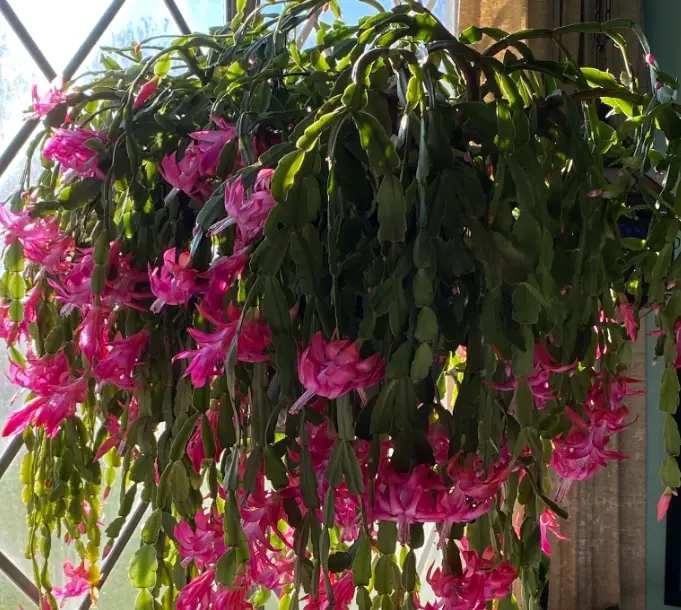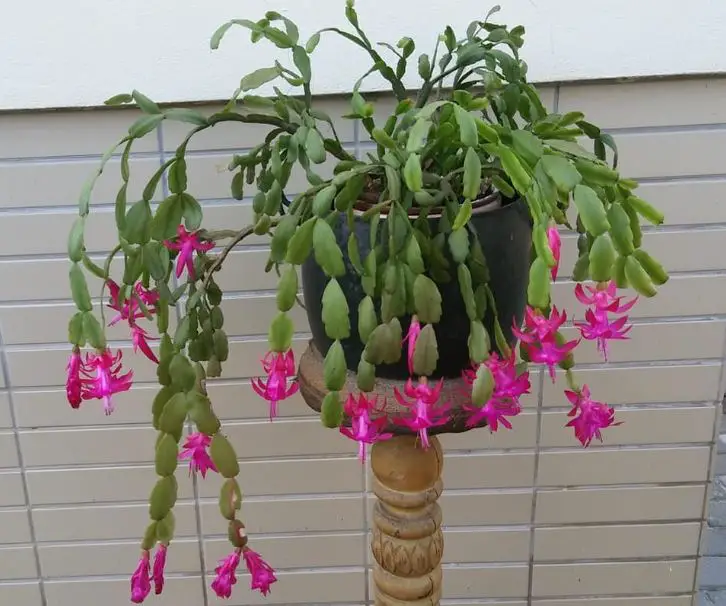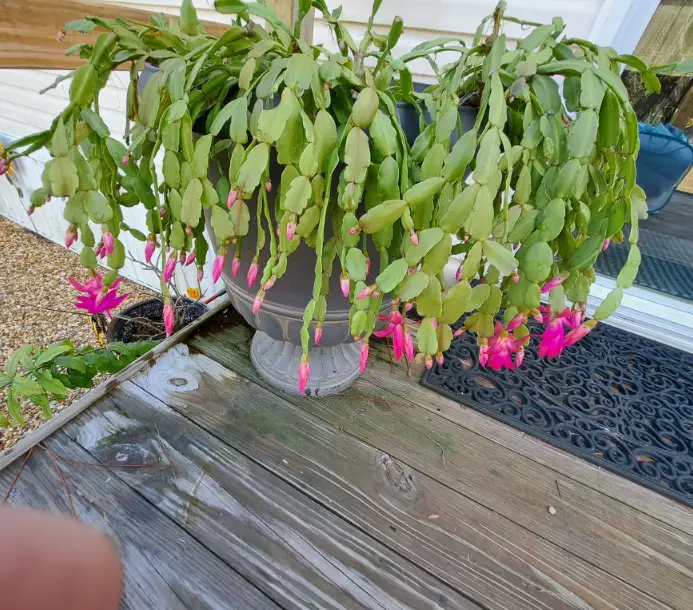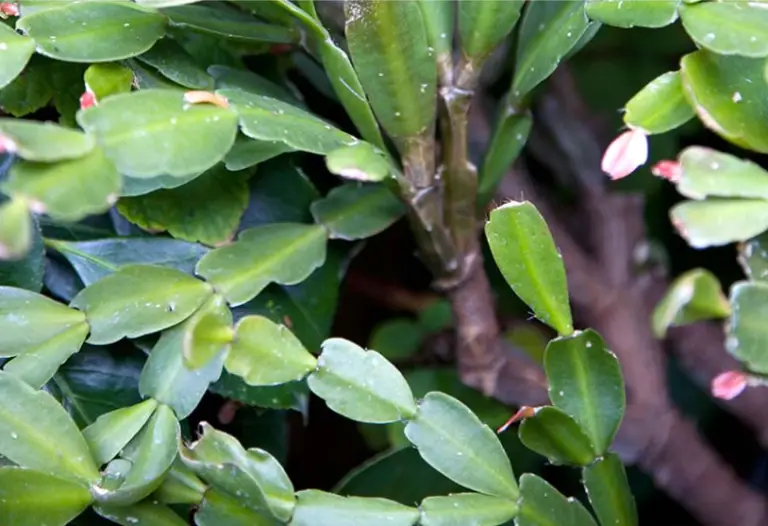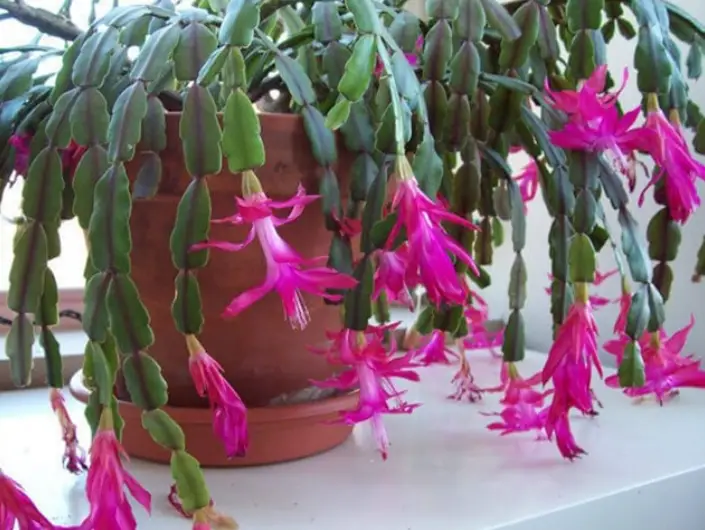Explained: How Big Do Thanksgiving Cactus Get?
Thanksgiving cacti are a holiday staple in many American homes. Their vibrant blooms steal the show just as we’re prepping for turkey and pumpkin pie. But if you’re like me, you’ve probably wondered, How big do these plants actually get?
When I brought home my first Thanksgiving cactus, I pictured a petite houseplant that would stay tidy on my windowsill. Understanding the size and growth habits of a Thanksgiving cactus (Schlumbergera truncata) is key to giving it the space and care it needs to thrive.
Before we talk size, let’s get to know this plant. The Thanksgiving cactus, native to Brazil’s tropical rainforests, isn’t your typical desert cactus. It’s a succulent with flat, segmented stems that produce stunning blooms in shades of pink, red, white, or orange.
Unlike its cousin, the Christmas cactus, it has pointed, claw-like segments and typically blooms around November, perfect for Thanksgiving decor. I fell in love with mine when I saw its bright pink flowers at a local nursery, but I had no idea how much space it would eventually demand.
Thanksgiving cacti are popular because they’re low-maintenance and add festive cheer. But their size can surprise you if you’re not prepared. Let’s explore how big they get and how to manage their growth.
How Big Do Thanksgiving Cacti Get?
So, how big do Thanksgiving cacti get? In my experience, it depends on a few factors like care, environment, and age. Here’s the breakdown:
Typical size in homes
Indoors, a mature Thanksgiving cactus usually grows to about 12-24 inches wide and 10-18 inches tall, including its arching stems. Mine started as a small 6-inch plant but doubled in width within a couple of years.
The stems, or cladodes, grow in a cascading pattern, making the plant appear larger when it spreads out.
Pot size impact
The pot you choose plays a big role. In a small 4-6 inch pot, your cactus will stay compact, around 8-12 inches wide. But give it a larger pot, and it can stretch to 24 inches or more. I upgraded mine to an 8-inch pot, and it’s now a sprawling centerpiece on my dining table.
Outdoor growth (in warm climates)
In frost-free zones (like USDA zones 10-11), Thanksgiving cacti can grow larger if planted outdoors. Sometimes it can reach up to 3 feet wide in ideal conditions. Most American households, though, keep them indoors due to cold winters.
Age and growth rate
These cacti are slow growers, adding a few segments each year. A well-cared-for plant can live decades, gradually getting bigger. My neighbor has a 20-year-old cactus that’s a whopping 30 inches wide!
According to research, Thanksgiving cacti grow wider than tall due to their trailing stems, which can make them look more dramatic than their actual size suggests.
Factors That Influence Thanksgiving Cactus Size
Several factors determine how big your Thanksgiving cactus will get. I’ve learned this through trial and error, and here’s what makes a difference:
1. Pot size and root space
Thanksgiving cacti like to be slightly root-bound, but too small a pot can stunt growth. My first cactus was in a tiny pot, and it barely grew until I repotted it. A pot that’s too large, though, can lead to overwatering issues.
Tip
Choose a pot 1-2 inches larger than the root ball every 2-3 years. I use a 6-inch pot for my young cactus and plan to upgrade to an 8-inch one soon. The Missouri Botanical Garden suggests terracotta pots for better drainage.
2. Light exposure
Light affects growth rate and size. Too little light makes the plant leggy and weak, while too much can scorch it. I once placed mine in direct sun, and the stems turned purple and stopped growing.
Tip
Provide bright, indirect light, like near an east-facing window. A sheer curtain helps if your windows get strong sunlight. The Royal Horticultural Society recommends 12-14 hours of darkness daily in fall to trigger blooming, which also supports healthy growth.
3. Watering Habits
Inconsistent watering can limit size or cause stem drop. I learned this when I underwatered mine during a busy holiday season, and it stopped growing for months.
Tip
Water when the top inch of soil is dry, using a well-draining mix with perlite or sand. The Clemson Cooperative Extension advises against letting the soil stay soggy, as it can rot roots and halt growth.
4. Humidity and temperature
Thanksgiving cacti love humidity and stable temperatures (60-70°F). Dry air in heated homes can slow growth. My cactus struggled in my dry Chicago apartment until I added a humidifier.
Tip
Aim for 50-60% humidity. Place a tray of water with pebbles near the plant or mist it lightly. Keep it away from drafty windows or heaters.
5. Fertilization
Nutrients fuel growth, but overfeeding can harm the plant. I made the mistake of using a high-nitrogen fertilizer, which led to lots of leaves but no blooms.
Tip
Use a balanced 10-10-10 fertilizer diluted to half strength every 2-4 weeks in spring and summer. Stop in fall to let the plant focus on blooming.
6. Pruning and maintenance
Pruning can control size and encourage bushier growth. I trim my cactus after blooming to keep it from getting too wild.
Tip
Pinch or cut back leggy segments in spring. Use clean scissors and replant cuttings to propagate new plants.
Managing Size in Your Home
Thanksgiving cacti can get surprisingly large, but you can control their size to fit your space. Here’s how I keep mine in check:
- I place my cactus on a wide windowsill or a plant stand to accommodate its spreading stems. Hanging baskets are great for letting stems cascade without taking up table space.
- Repot every 2-3 years to avoid oversized growth. I stick to pots no larger than 8 inches for indoor plants.
- After blooming, I trim back a few segments to keep the plant compact. This also encourages fuller growth. You can also deadhead your Thanksgiving cactus to make it tidier.
- If your cactus gets too big, take cuttings to start new plants. I’ve gifted several to friends, and they love them!
My Thanksgiving Cactus Story
When I got my first Thanksgiving cactus, I thought it would stay small forever. It was a cute 6-inch plant, perfect for my tiny apartment. But after two years of proper care, it’s now a 20-inch-wide beauty that dominates my living room during the holidays.
I’ve had to move it to a larger table to give it room to spread. Watching it grow has been rewarding, but it taught me to plan for its size from the start. Now, I’m hooked on these plants and even started a second one from a cutting!
FAQs
Here are the frequently asked questions about Thanksgiving cactus size:
Q: How fast do Thanksgiving cacti grow?
A: They’re slow growers, adding a few segments yearly. With good care, they can double in size in 2-3 years. Mine grew from 6 to 20 inches wide in two years.
Q: Can I keep my Thanksgiving cactus small?
A: Yes! Use a small pot (4-6 inches) and prune annually to control size. Avoid overfertilizing, as it encourages rapid growth.
Q: Why is my cactus growing tall instead of wide?
A: Tall, leggy growth usually means too little light. Move it to a spot with bright, indirect light.
Q: Can a Thanksgiving cactus get too big for my home?
A: Indoors, they rarely exceed 24 inches wide, but you can manage size with pruning and smaller pots. Hanging baskets are great for large plants.
Q: Do Thanksgiving cacti grow bigger outdoors?
A: In warm climates (zones 10-11), they can reach 3 feet wide. Most households in the U.S.A. keep them indoors, where they stay smaller.
Final Thoughts
Thanksgiving cacti can grow larger than you might expect. But, with the right care, you can manage their size to fit your American home. Whether you want a compact windowsill plant or a sprawling holiday showstopper, understanding their growth habits is key.
My cactus has taught me that a little planning—pot size, light, and pruning—goes a long way. So, give your cactus the space and love it needs, and it’ll reward you with stunning blooms every Thanksgiving. Have a question about your cactus? Let me know in the comments!
Tim M Dave is a gardening expert with a passion for houseplants, particularly cacti and succulents. With a degree in plant biology from the University of California, Berkeley, he has vast experience in gardening. Over the years, he has cultivated a vast collection of desert plants and learned a great deal about how to grow and care for these unique companions.


